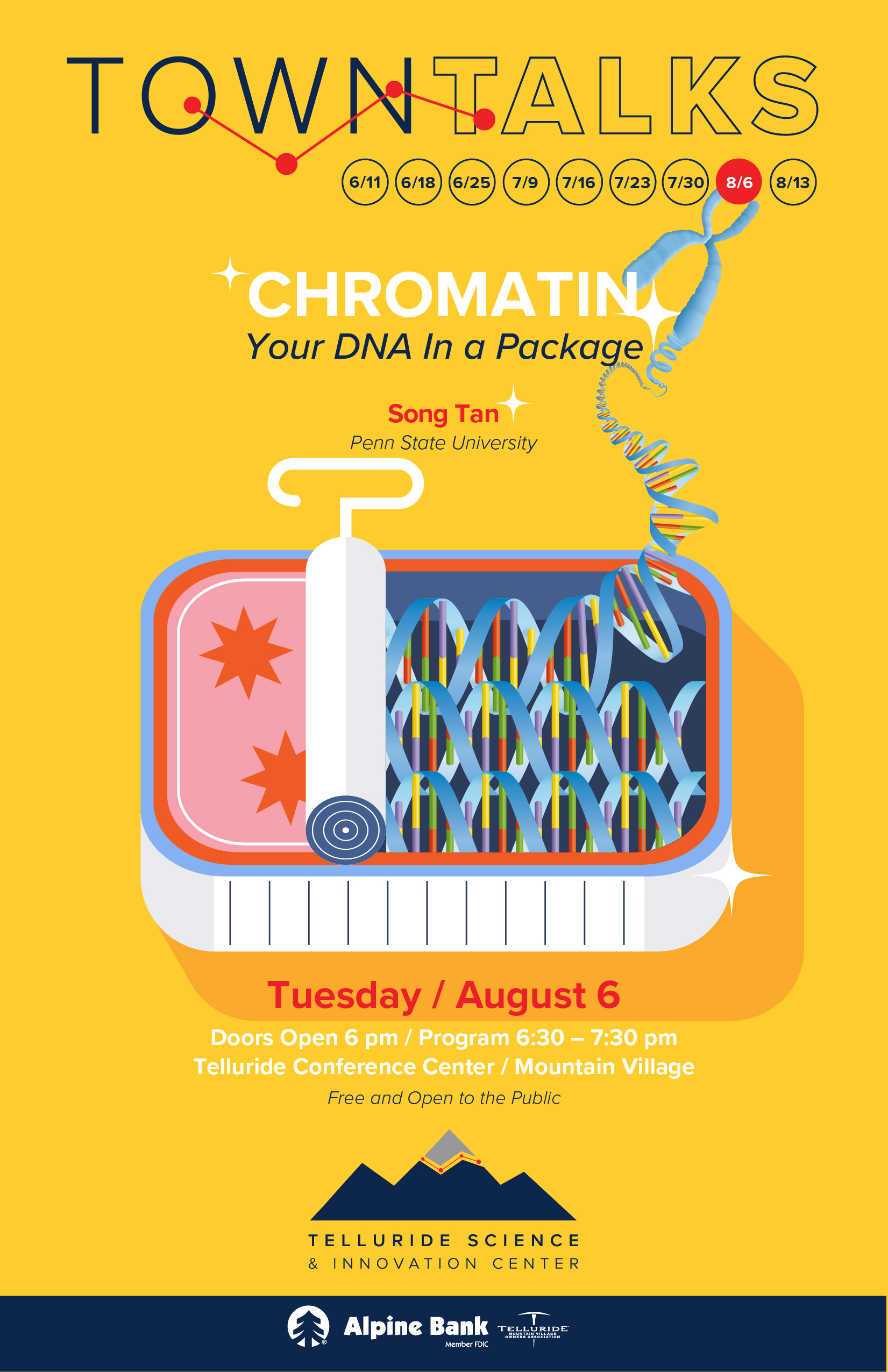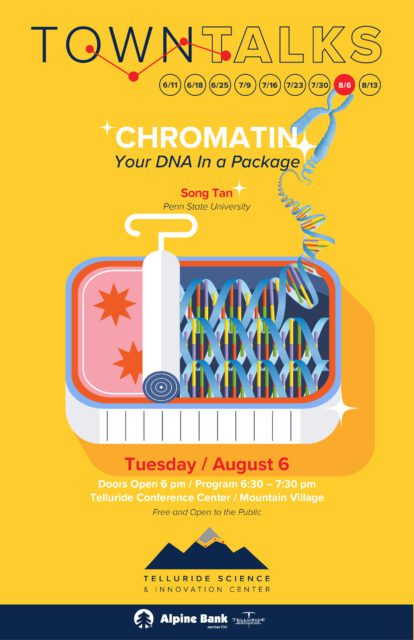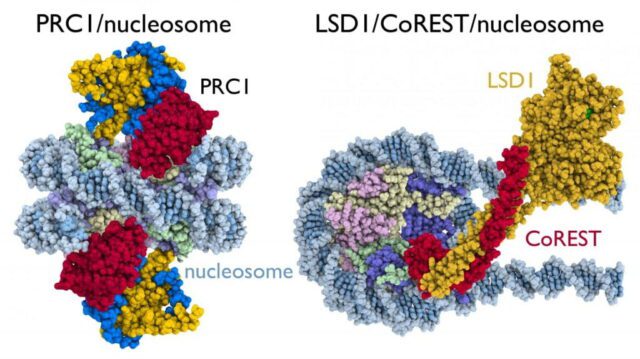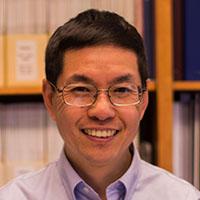
31 Jul Telluride Science Town Talks: “Chromatin: Your DNA in a Package,” with Dr. Song Tan, 8/6!
This coming week the 2024 Telluride Science Town Talks series continues with Dr. Song Tan. His subject,“Chromatin: Your DNA in a Package.” The event takes place Tuesday, August 6, 6:30 pm, doors, 6 p.m., at the Telluride Conference Center in Mountain Village. Town Talks are FREE and open to the public.
Note: Telluride Science is committed to expanding its public outreach programming. This summer, Telluride Science is hosting the greatest number of Town Talks the nonprofit has held to date, a total of nine. All Town Talks are to be held at the Telluride Conference Center. Mountain Village.
Visit telluridescience.org to learn more about Telluride Science and the capital campaign to transform the historic Telluride Depot into the Telluride Science & Innovation Center. The venue is now the permanent home for Telluride Science and a global hub of inspired knowledge exchange and development where great minds get to solve great challenges.
The 2024 Telluride Science Town Talks series is being presented by Alpine Bank with additional support from the Telluride Mountain Village Owner’s Association.
Go here for more about Telluride Science.
Go here for more on Town Talks.

Think of deoxyribonucleic acid or, in plain speak DNA, as the instruction manual for making all the proteins our bodies need to thrive. In other words, DNA is the blueprint for life.
But how exactly do we go from a fertilized egg to an embryo?
Every cell’s nucleus in the human body has six feet of DNA or the equivalent to stuffing 30 miles of thread into a basketball. But organisms need more than just DNA to form our most vital organs such as the heart, liver, brain etc. DNA needs packaging, so DNA is wrapped around histone proteins to form chromatin.

Image courtesy Tan labs at Penn State.
Our DNA blueprint must be read out in a regulated manner or chaos results.
In fact, improper regulation of gene expression is a major cause of cancer. Modern studies of how gene expression is regulated in normal and cancer cells try to understand how the cell handles this packaging of DNA into chromatin.
Dr. Song Tan believes that a deeper understanding of chromatin will have a positive impact on cancer research and treatment. Using advanced imaging technologies, Tan and his laboratory were the first to visualize a chromatin complex. Viewing the structures of chromatin complexes, Tan sets out to reverse-engineer their function:
“What something looks like relates to its function. Seeing what it (DNA in chromatin complexes) looks like gives you a basis to ask better questions.”
Research like Tan’s is at the forefront in the development of new drugs that can effectively tell chromatin to flip the right switches on or off, which in turn holds the promise of dealing with lingering challenge of cancer.
2024 Town Talks, schedule, just one more:
• August 13: “Observing Thunderstorms and Extreme Weather from Space”
Dr. Song Tan, more:

Dr. Song Tan, courtesy Telluride Science.
Dr. Tan graduated Cornell University in 1985 with a major in physics and a concentration in biochemistry. He went on to earn a PhD from the MRC Laboratory of Molecular Biology as a Marshall Scholar in 1989, and continued his career as a postdoctoral fellow at the ETH-Zürich.
In 1998, Tan joined the Department of Biochemistry and Molecular Biology at Penn State University as an assistant professor.
During his time at Penn State, Tan was named a Pew Scholar in the Biomedical Sciences and appointed as the holder of the Verne M. Willaman Chair in Molecular Biology.
Dr. Tan’s research interests include biophysics, biochemistry,, structural biology, gene regulation, and chromatin biology.
Additionally, Tan serves as the Director for the Center for Eukaryotic Gene Regulation and leads the Tan Lab which combines biochemical and structural approaches to answer the question about how chromatin enzymes and transcription factors recognize nucleosomes, and how gene activity is regulated on a chromatin template.


Sorry, the comment form is closed at this time.